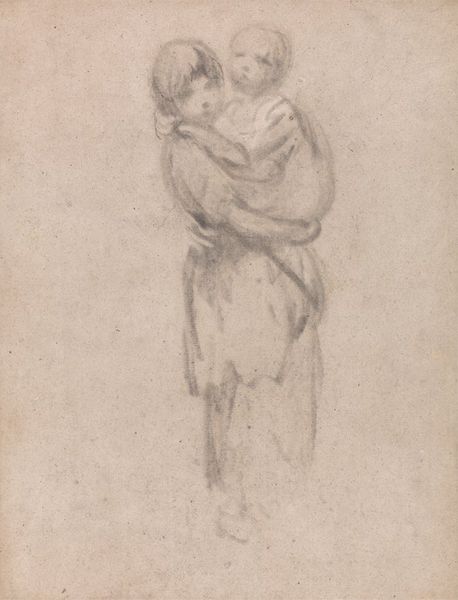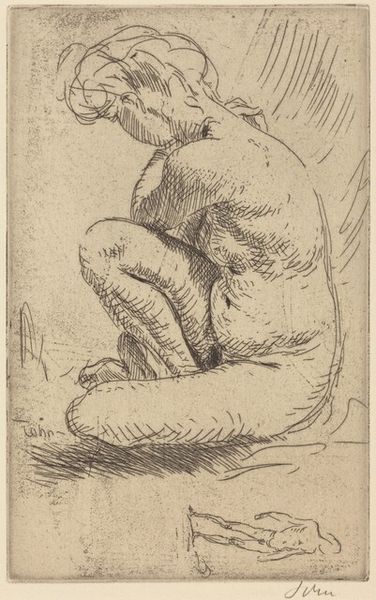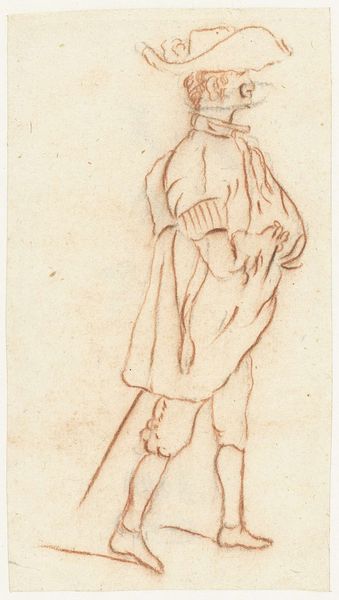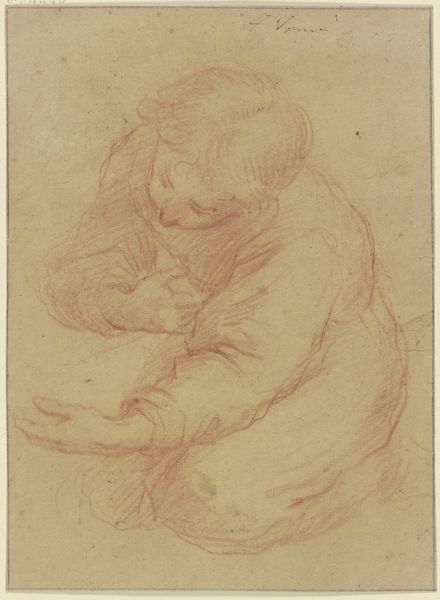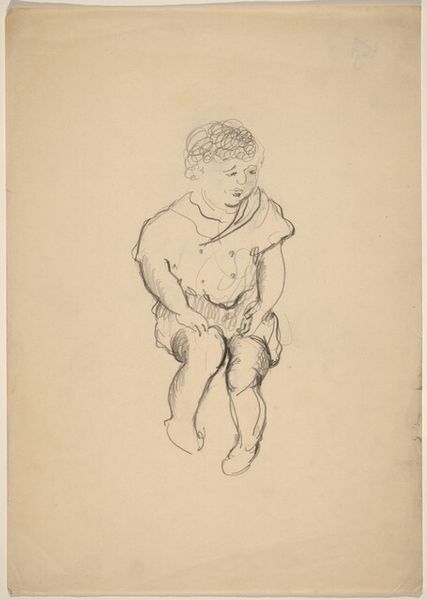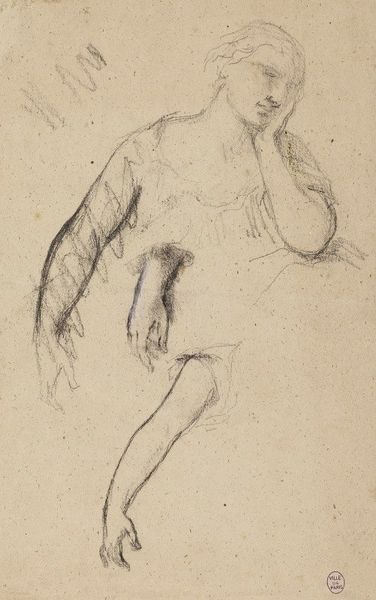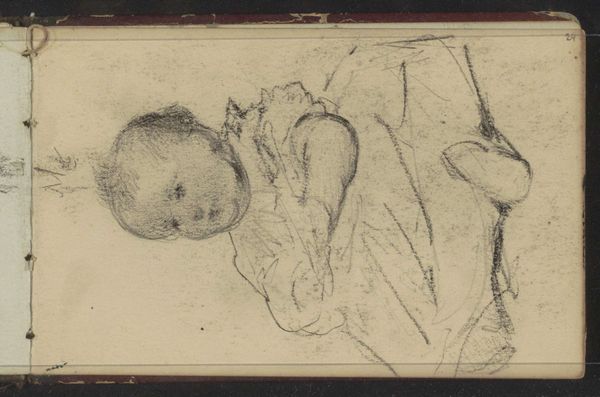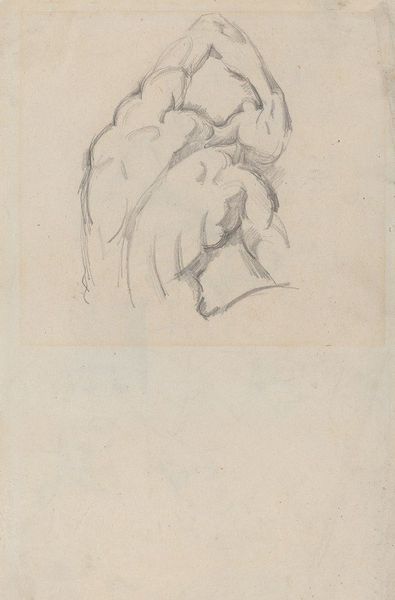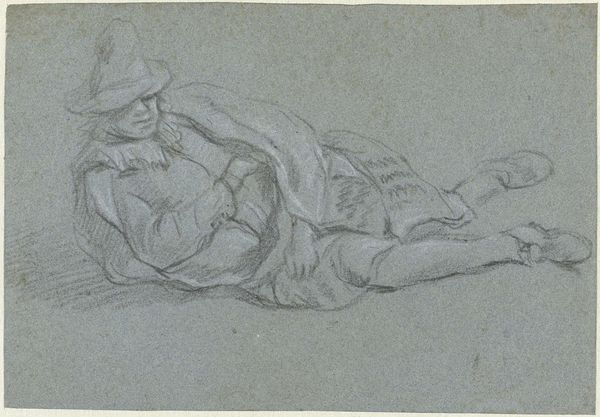
drawing, charcoal
#
portrait
#
drawing
#
figuration
#
genre-painting
#
charcoal
#
academic-art
Copyright: Public Domain: Artvee
Curator: What strikes you first about this drawing? It’s a study, created with charcoal, by Pierre Puvis de Chavannes. The title translates to "Child's Study for 'The Childhood of Saint Genevieve'." Editor: The vulnerability, certainly. There’s a tenderness in the way the artist captures the child’s posture, this intimate moment. It makes me wonder about the context around depictions of children in art during this period, and how it was shaped by the political climate. Curator: The study speaks to a fascinating aspect of artistic practice at the time. Consider that many academic artists created numerous preparatory studies, like this one, to develop their concepts and composition. This work served Puvis de Chavannes in creating his painting of Saint Genevieve's childhood. Editor: Yes, and in the way this image depicts girlhood, it’s impossible to separate the art from considerations about identity and social position. Saint Genevieve herself has been deployed over time as a symbol of French identity and resistance. How much of that legacy is already embedded in this simple study? Curator: That's insightful. Her depiction as a young girl allows us to consider the narrative being constructed around Genevieve. Puvis de Chavannes sought to connect with his audience, reflecting contemporary anxieties, such as secularism and urbanization through moral subjects taken from history and legend. The monumental canvases featuring Genevieve became very popular in France, fostering a sense of national identity and collective memory during a period of significant social change. Editor: I think this is important. We cannot extract the making of the piece, regardless of how simple, from that climate. What stories were deemed worthy? Whose lives are commemorated? How did representations contribute to the period's political and social discourse? These questions remain as potent as the strokes of charcoal on the page. Curator: Examining this work reveals the complexities inherent in even seemingly simple artistic gestures. It's a potent reminder that art engages with broader societal dialogues, regardless of its scale. Editor: Precisely. And recognizing the historical, social context allows us to see the layers of meaning within. I find myself curious to now research about the artist in our contemporary world.
Comments
No comments
Be the first to comment and join the conversation on the ultimate creative platform.

